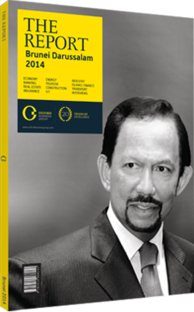The government is focused on encouraging more efficient use of power supplies
As an export-oriented energy producer and a high-income country with a humid climate, Brunei Darussalam has one of the world’s highest rates of energy consumption per capita. According to the International Energy Agency (IEA), annual per capita consumption stood at 9.44 tonnes of oil equivalent in 2011, the sixth-highest amount in the world and about five times the global average. However, most of that energy is consumed in the process of producing oil and gas for export, and the Sultanate’s carbon emissions per GDP are actually 15% below the Asian average, according to the IEA. Nonetheless, the government is taking steps to improve conservation and efficiency.
Updating Facilities
The most substantial steps being taken focus on ensuring that gas-fired power plants use high-efficiency technologies. According to IEA data, Brunei Darussalam’s power plants had an average efficiency of 28% in 2011, compared to 42% in the US. Two major power plant upgrades were already under way in 2014. At the Lumut plant, the government was spending BN$300m ($235.29m) to add 66 MW of capacity using heat-and-power cogeneration technology, which will result in overall savings of BN$118m ($92.55m) each year in tems of fuel costs. At the Berakas power plant, the state-owned Berakas Power Management Company is installing an OR egen waste-heat recovery system from General Electric on the plant’s existing four gas turbines. The systems will add 56 MW of capacity and boost efficiency by more than 45%, while also requiring far less water than a standard combined-cycle plant. That first phase of the project is scheduled to be completed in the first quarter of 2016
Changing Consumption
The government has also sought to encourage conservation with a progressive tariff schedule for residential electric power. The first 600 KWh of power is charged at only BN$0.01 ($0.008) per KWh. After 600 KWh, tariffs rise to BN$0.08 ($0.06), BN$0.10 ($0.08) once consumption surpasses 2000 KWh and to BN$0.12 ($0.09) after 4000 KWh. However, Brunei Darussalam’s top rate is still less than half the average US and European rate. While initially the introduction of the new tariffs in 2012 did little to slow residential power usage, by December 2013 there was a 12%, or 266 GWh, in electricity usage, which rises to 16% if 4% growth is taken into account.
New Plans
The Sultanate is also studying ways to help meet renewable energy targets agreed on within ASEAN. The bloc set a target of renewable energy accounting for 15% of collective energy supply by 2015, and Brunei Darussalam has so far very little renewable generation, consisting mainly of a small solar power plant that produces about 1.7 GWh a year. The country completely lacks hydropower, a main source of alternative energy.
In its March 2014 “Energy White Paper”, the Energy Department at the Prime Minister’s Office (EDPMO) set very ambitious targets of 124 GWh of renewable power generation by 2017 and 954 GWh by 2035. To meet this target the EDPMO is planning to introduce a feed-in tariff in order to encourage investment in renewable energy systems. The policy should help to spur development of distributed solar generation within the country. The government is planning to take a leading role in identifying land for utility-scale solar projects. The government is also preparing to develop a waste-to-energy project using municipal solid waste. The project is expected to generate 10-15 MW of power.
Romeo Pacudan, director and chief researcher for renewable and alternative energy at the Brunei National Energy Research Institute, told OBG that the main obstacle to increased use of solar power is its cost, estimated at about $0.30-0.35 per KWh for smaller, local systems and $0.20-0.30 per KWh for centralised solar plants of 1 MW capacity or more.
Anticipated regulatory changes should also help improve efficiency. Arief DH Abdul Razak, the CEO of CIC Environmental Services, told OBG, “An anticipated revision of environmental laws in Brunei Darussalam will serve to encourage the consideration of waste management by oil and gas operators as necessary, as well as aiding the push for renewable energies.”
You have reached the limit of premium articles you can view for free.
Choose from the options below to purchase print or digital editions of our Reports. You can also purchase a website subscription giving you unlimited access to all of our Reports online for 12 months.
If you have already purchased this Report or have a website subscription, please login to continue.

